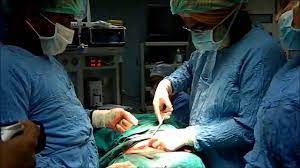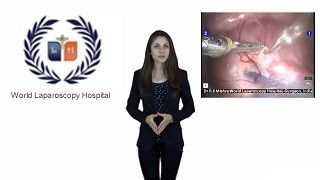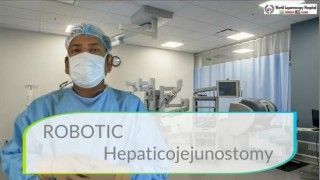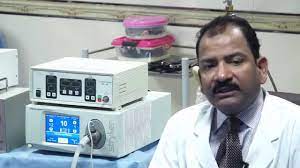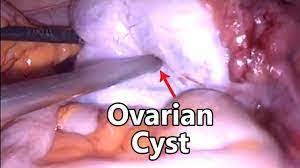Minimally Invasive Hysterectomy with Sacrocolpopexy: Treating Pelvic Organ Prolapse Laparoscopically
Add to
Share
1,435 views
Report
2 years ago
Description
Introduction: Pelvic organ prolapse is a common condition in women, characterized by the descent or protrusion of pelvic organs, such as the uterus, vagina, bladder, or rectum. It can significantly impact a woman's quality of life, causing discomfort, urinary incontinence, and sexual dysfunction. Traditional surgical management of pelvic organ prolapse often involved open abdominal procedures with prolonged recovery periods. However, advancements in surgical techniques have led to the emergence of total laparoscopic hysterectomy with sacrocolpopexy as a highly effective and minimally invasive approach. This essay aims to explore the procedure of total laparoscopic hysterectomy with sacrocolpopexy and its advantages in treating pelvic organ prolapse. Understanding Pelvic Organ Prolapse: Pelvic organ prolapse occurs when the supporting structures of the pelvic organs weaken or stretch, causing them to descend from their normal positions. Factors such as childbirth, menopause, aging, and chronic conditions like obesity or chronic cough can contribute to the development of pelvic organ prolapse. The severity of the condition varies, ranging from mild cases where the organs only slightly descend to more severe cases where the organs protrude outside the vagina. Surgical intervention becomes necessary when conservative treatments fail to alleviate symptoms or when the prolapse significantly affects a woman's quality of life. Total Laparoscopic Hysterectomy with Sacrocolpopexy: Total laparoscopic hysterectomy with sacrocolpopexy is a surgical procedure that combines the removal of the uterus (hysterectomy) with the reconstruction and suspension of the prolapsed pelvic organs (sacrocolpopexy). This procedure is performed using a laparoscope, a thin, lighted instrument with a camera, and specialized surgical instruments. The surgeon makes several small incisions in the abdomen to access and manipulate the pelvic organs using the laparoscope, without the need for a large abdominal incision. Procedure and Benefits: During the procedure, the surgeon detaches the uterus from its supporting ligaments and blood vessels, and the uterus is removed through one of the small incisions. Next, a synthetic mesh is used to reinforce the weakened pelvic floor tissues and provide support to the prolapsed organs. The mesh is securely attached to the sacrum (lower part of the spine) to create a durable suspension and restore the normal anatomical position of the organs. By performing the procedure laparoscopically, the surgeon can achieve excellent visualization, precise dissection, and reduced tissue trauma. Total laparoscopic hysterectomy with sacrocolpopexy offers several advantages over traditional open abdominal procedures. First, the minimally invasive approach results in smaller incisions, reduced postoperative pain, and faster recovery. Patients typically experience less scarring and have a shorter hospital stay compared to open surgery. Second, the laparoscopic technique allows for better visualization and magnification, enabling the surgeon to perform intricate dissection and accurate placement of the mesh for optimal support. Furthermore, the procedure can be tailored to the specific needs of each patient, addressing multiple aspects of pelvic organ prolapse simultaneously. This topic delves into the surgical approach known as total laparoscopic hysterectomy with sacrocolpopexy, which offers a minimally invasive solution for the management of pelvic organ prolapse. Pelvic organ prolapse is a condition that involves the descent or protrusion of pelvic organs, leading to discomfort and functional impairments. This essay explores the procedure of total laparoscopic hysterectomy with sacrocolpopexy, which involves the removal of the uterus and the reconstruction of the prolapsed organs using a laparoscopic approach. The description highlights the benefits of this technique, including smaller incisions, reduced postoperative pain, faster recovery, and improved cosmetic outcomes. The procedure's ability to address multiple aspects of pelvic organ prolapse simultaneously is emphasized, along with the importance of individualized treatment planning and surgical expertise. The description concludes by acknowledging the need for further research and long-term studies to validate the effectiveness and safety of total laparoscopic hysterectomy with sacrocolpopexy in treating pelvic organ prolapse. Conclusion: Total laparoscopic hysterectomy with sacrocolpopexy represents a significant advancement in the surgical management of pelvic organ prolapse. This minimally invasive approach offers numerous benefits, including reduced postoperative pain, faster recovery, and improved cosmetic outcomes. By combining the removal of the uterus with the reconstruction and suspension of prolapsed pelvic organs, this procedure effectively restores normal anatomy and alleviates the symptoms associated with pelvic organ prolapse. However, thorough patient evaluation, individualized treatment planning, and proper surgical expertise are essential for achieving successful outcomes. Continued research and long-term studies are necessary to further validate the efficacy and safety of total laparoscopic hysterectomy with sacrocolpopexy in the treatment of pelvic organ prolapse.
Similar Videos

